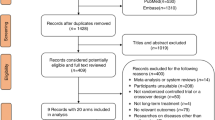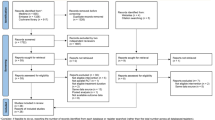Abstract
Inhaled corticosteroids remain the most important therapy for chronic asthma in both adults and children. As all inhaled corticosteroids act by binding to a common glucocorticoid receptor there is little evidence of any real difference in clinical efficacy between the different inhaled corticosteroids. The main potential differences are in their propensity to cause side effects. Local side effects such as a hoarse voice do occur in a proportion of adults and there is some limited evidence that ciclesonide may cause less local side effects. In adults there is little evidence for clinically important systemic side effects from doses of inhaled steroids below 800 mcg/day (beclomethasone equivalent). Above this dose a proportion of patients may show some adrenocortical suppression, though it is unlikely to be of clinical importance. Data on bone mineral density and fracture rates is discrepant, but an overview would suggest that below 800 mcg/day there is no increase in fracture risk whereas above this dose there might be an increased fracture risk. The properties of ciclesonide would suggest that it has less propensity for systemic side effects, but large long-term studies are needed to confirm this. In children using inhaled steroids at above-licensed doses reductions in short-term growth can occur, but there is little evidence for reductions in long-term growth at normal doses. At above-licensed doses, biochemical adrenocortical suppression can occur with some unusual but documented cases of clinical Addisonian crisis. Limited evidence in paediatric age groups would suggest that ciclesonide may have some advantage although it is not as yet licensed in all countries for paediatric use. Data on differences in side effects between normal and asthmatic patients, and between asthmatic patients with near-normal lung function compared to those with impaired lung function, indicate that inhaled corticosteroids (particularly fluticasone) are absorbed more in those with normal lung function; this strongly supports stepping down the inhaled steroid dose when asthma is controlled - as is recommended in asthma guidelines.
Similar content being viewed by others
Article PDF
Author information
Authors and Affiliations
Corresponding author
Ethics declarations
Competing interests
The author has lectured for or received consulting fees from GlaxoSmithKline, AstraZeneca, Altana, Merck, Generics and TEVA. He has received research funding from GlaxoSmithKline and AstraZeneca which has gone into departmental funds Neither he nor his family own shares in any pharmaceutical company
Rights and permissions
About this article
Cite this article
Barnes, N. The properties of inhaled corticosteroids: similarities and differences. Prim Care Respir J 16, 149–154 (2007). https://doi.org/10.3132/pcrj.2007.00038
Received:
Accepted:
Published:
Issue Date:
DOI: https://doi.org/10.3132/pcrj.2007.00038
This article is cited by
-
Currently Available Inhaled Therapies in Asthma and Advances in Drug Delivery and Devices
Indian Journal of Pediatrics (2022)
-
Bilateral non-traumatic hip fractures in a heavy smoker COPD patient on inhaled steroids
Archives of Osteoporosis (2016)
-
Erratum to: Safety Considerations of Inhaled Corticosteroids in the Elderly
Drugs & Aging (2015)
-
Safety Considerations of Inhaled Corticosteroids in the Elderly
Drugs & Aging (2014)
-
Stimmärztliche Betreuung und Behandlung von Sängern
HNO (2011)



